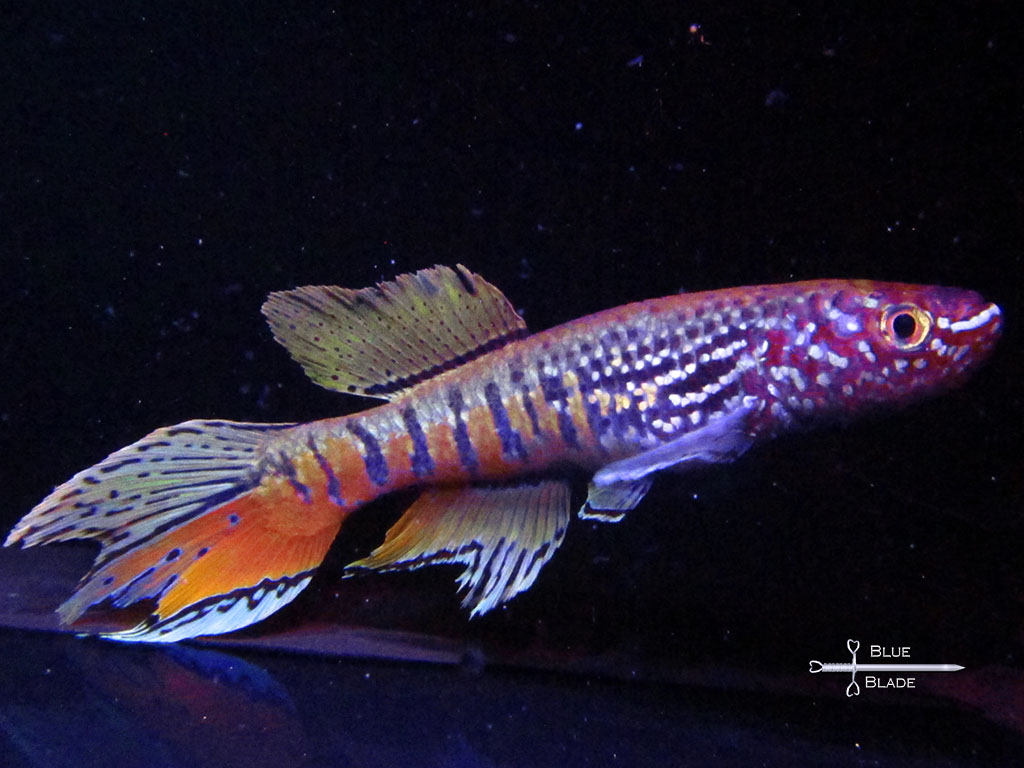
There are over 1200 species of killifish described so far, inhabiting small streams and shallow pools on every continent except Antarctica. The name "killifish" is believed to come from the Dutch word "kil" or "kill" meaning small stream. They are small fish, that often live short seasonal lives, and therefore males are brightly colored and quick to mature and breed. The females are almost always plain grey or silver, lacking the bright colors of the males.
They are unique in that most have eggs that can be dried for months and then hatch within a day of wetting. Dried eggs can be shipped cheaply around the world, and the young fry can be raised in small dishes. Adults can be kept and bred in small 5-gallon tanks. Almost all Killifish jump well. In the wild it helps them get to new puddles, but in a fish room it can be a flight to the next world. You should keep the tank securely lidded. Of those kept in aquaria there are two major categories that relate to their care: Annual Killifish and non-annual or semi-annual.
We are currently working to breed about 30 species of Killifish. Many of the newer species will not be avliable for some time, but as extra pairs mature they will be offered on AquaBid or at Expo's.
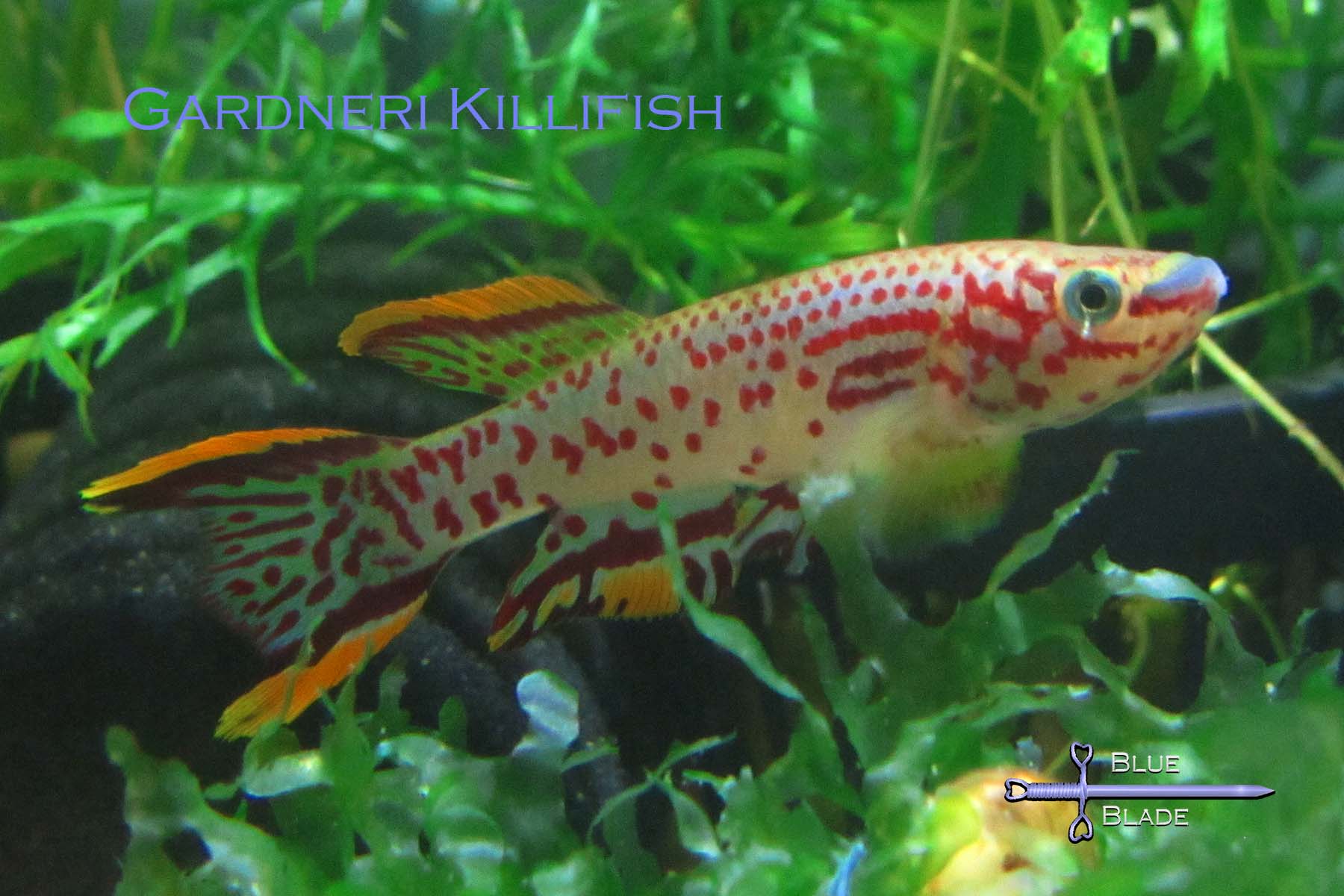
non-annual/semi-annual killifish:
Non-annual killifish are a lot like other small fish kept in aquaria. They typically have 2-3 year lifespans and eggs that hatch in water (without drying). They reach maturity and breeding age quickly, usually in 4 months or less, and in most cases the eggs can still be dried and stored for short periods (1-2 months).




Gardneri Killifish are very easy to breed mop spawners. They are non-annual Killifish that live several years and grow to almost 3 inches long. They are one of the best starting killifish, as they are beautiful, durable, and prolific in most conditions. In a community tank the males tend to be slightly aggressive, similar to a dwarf gurami or kribensis. Unless overcrowded the aggression is mostly towards other males of the same species. Several can be kept together if each has enough room to defend about a 10-inch diameter territory. This line is from the Misaje location in Cameroon, showing a stronger blue base color than many other lines.
I almost always have some Gardneri avliable - check AquaBid and my GetGills store or contact us at contact@bluebladefish.com
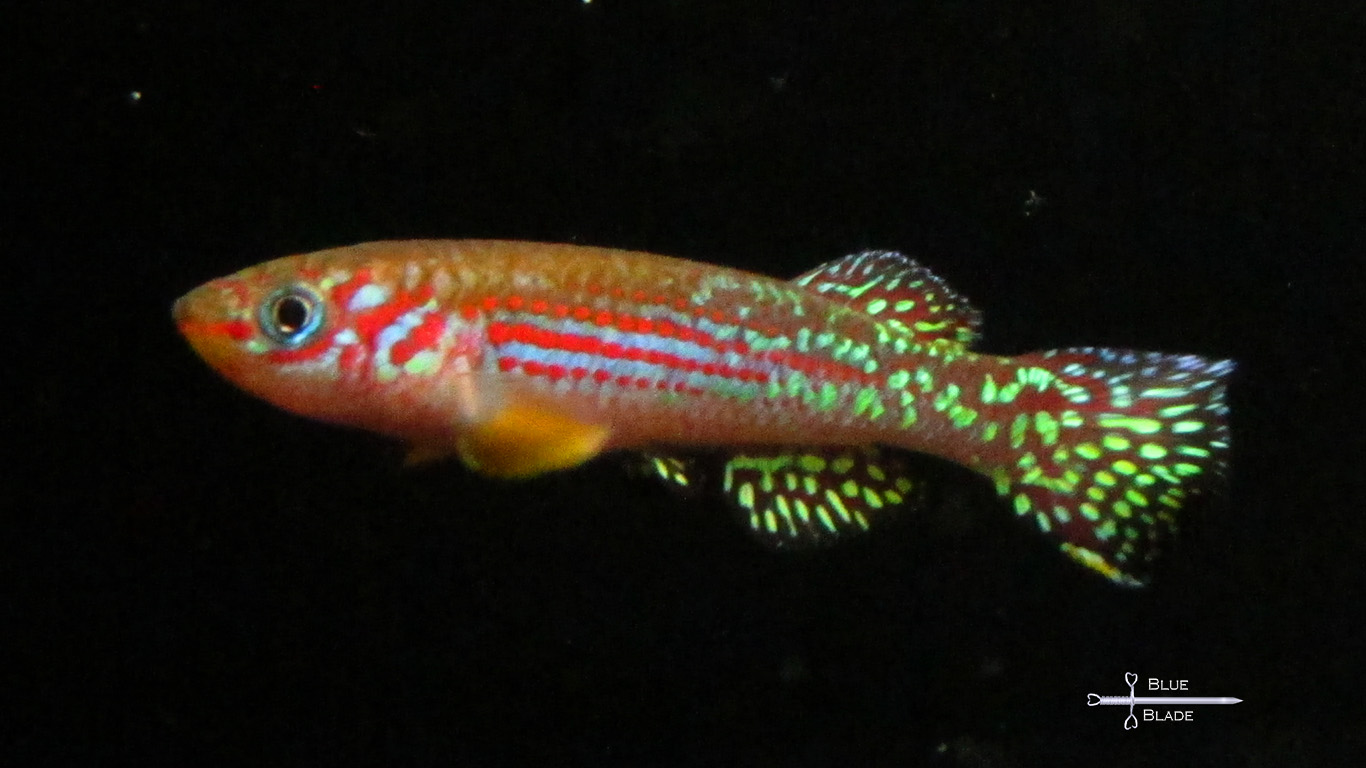




Fundulopanchax gresensi of the Takwai collection and location are another non-annual Killifish that grow to about 2.5 inches long. They are found near the villages of Takwai in Cameroon, west Africa.
These are a recent acquisition, and have just started producing. More info to come!
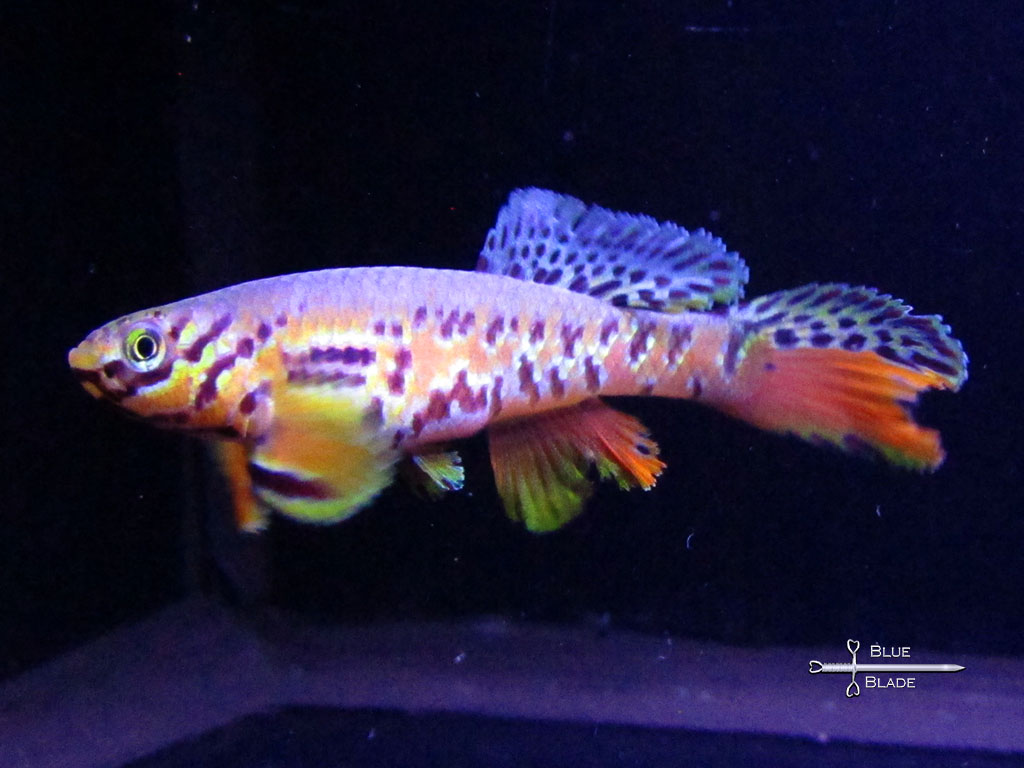




Fundulopanchax kribianus of the Fifinda ADK 09-301 collection and location are another large non-annual Killifish that grow to about 4 inches long. They are found the western coatal areas of Cameroon, west Africa.
Unlike many of the other Fundulopanchax, they are best breed with bowls of peat.
These are a recent acquisition, and have just started producing. More info to come!





Fundulopanchax ndianus are a new non-annual Killifish for BBF, that grow to about 2.5 inches long. They are found near the Ndian river in Cameroon and Nigeria.
These are a recent acquisition, and have just started producing. More info to come!
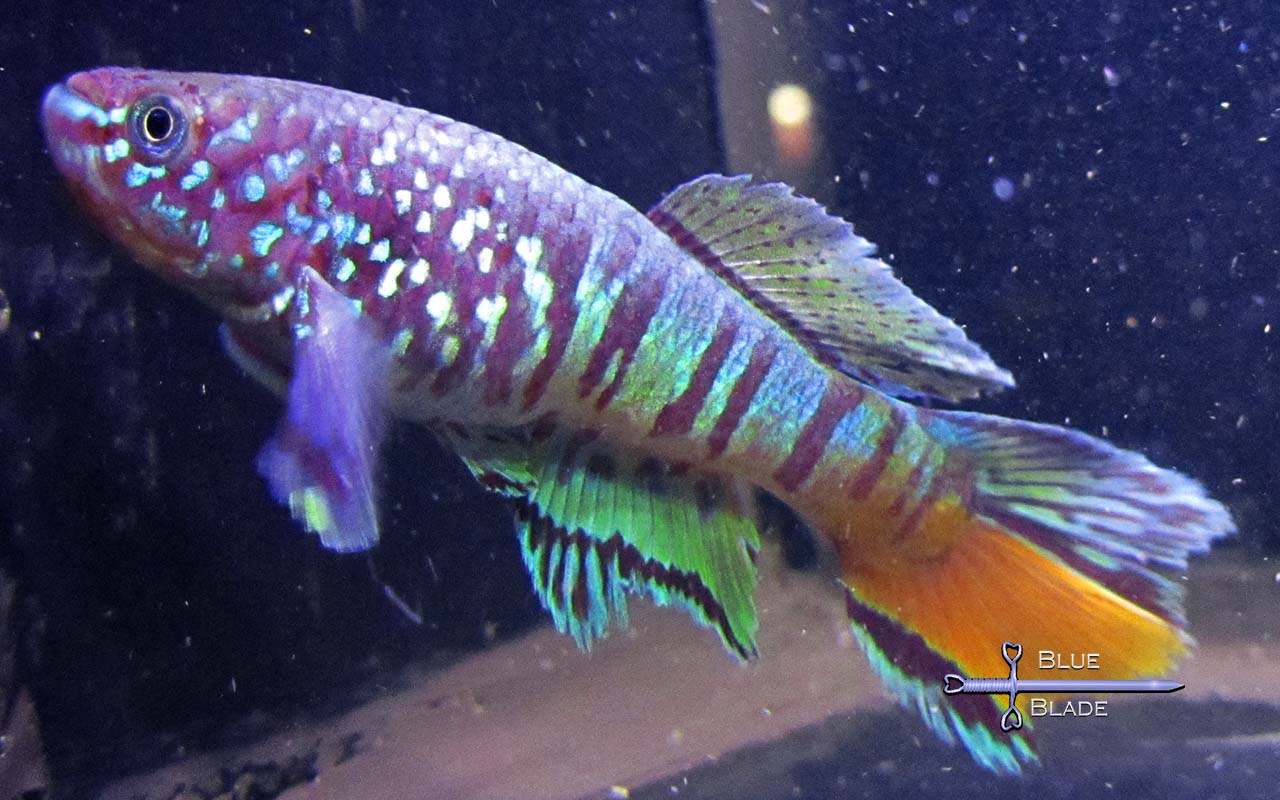




Fundulopanchax sjoestedti "dwarf red" are a line of fish origanially from Nigeria are one of the more fertile sjoestedti in the hobby. They are non-annual Killifish that live several years and grow to a bit over 3 inches long. They have good personality, unique and beautiful colors, and love to eat. Though bigger than Gardneri, they are slightly less aggressive. Make sure to separate the larger fry so they don't eat their smaller siblings. They breed well with bottom mops or peat in a dish.




Fundulopanchax spoorenbergi are non-annual Killifish that grow to about 2.5 inches long from the Nigeria/Cameroon area of west Africa. They are a smaller, more slender, and much more gentle killie than the gardneri while having similar coloration (though with better blues and greens on the body). They tend to be a bit shy, but breed well with bottom mops.




Aphyosemion australe are one of the longest kept killies in the hobby. The BSWG 97-24 Cap Esterias line was introduced in 1997 from Gabon Africa. Known as the "lyretail killifish" they have beautiful finnage and grow to about 2.5 inches long. Use a long top mop for breeding, though I tend to collect more fry from the tank than from eggs I collect and hatch. Many describe this fish as an easy one to breed and a good starter, though it has taken a while for me to get them producing. Now that they are, i should have some aviliable soon.
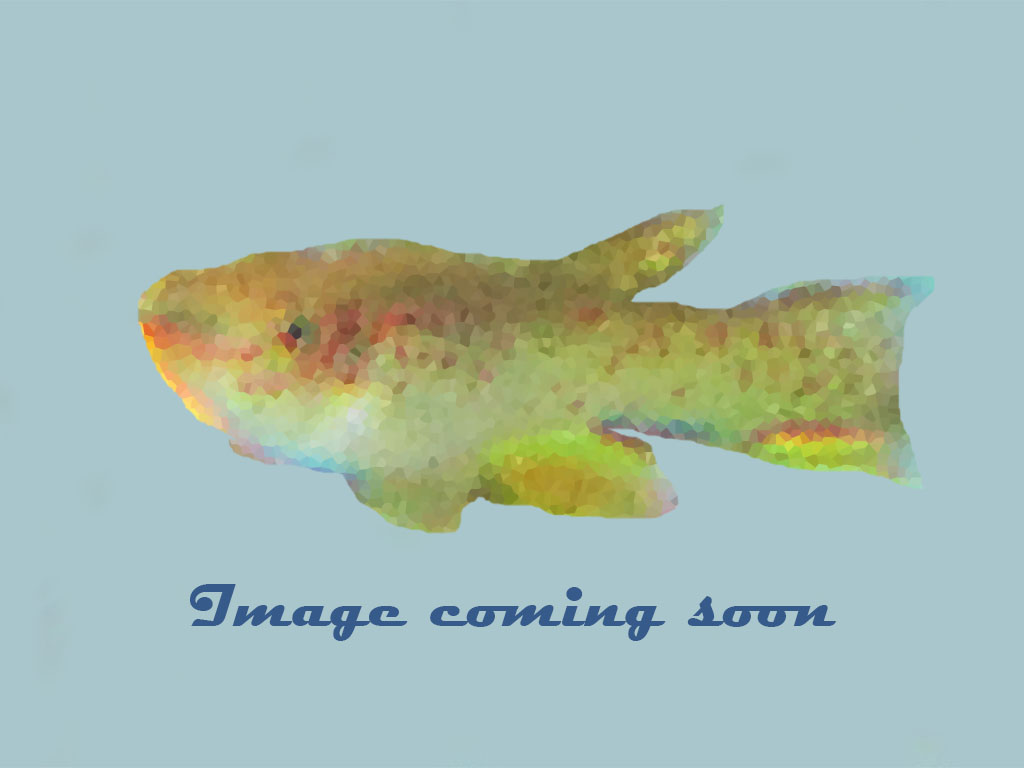




Also known as Chromaphyosemion bivitatum, Aphyosemion bivitatum of the Lagos location were collected from a small streams near Niger river in the Nigeria/Cameroon area of west Africa. They are a beutiful fish with the Males displaying long fins and a rainbow of color and irridescence and deep red colors. These are a new Species at BBF. Eggs are lain in top mops. They are non-annual Killifish that live several years and grow to about 2.5 inches long.
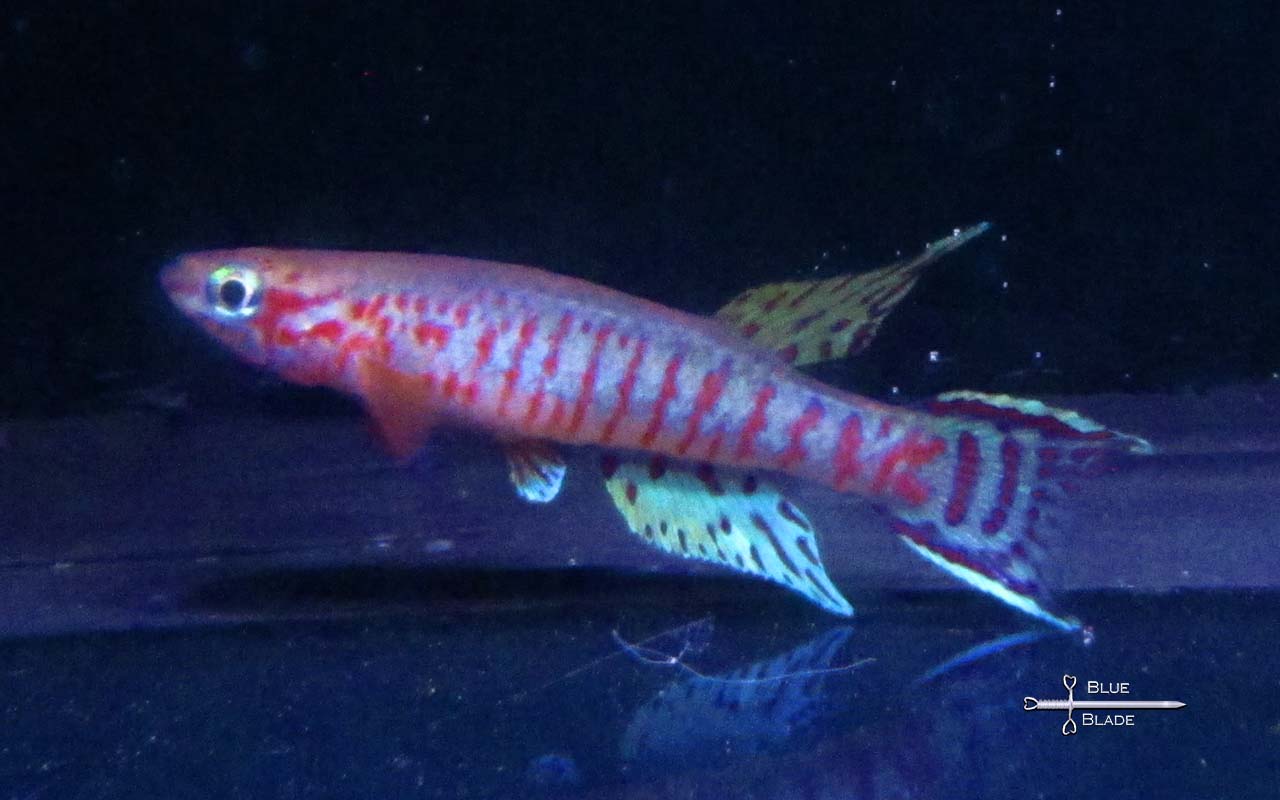




Aphyosemion elberti of the Batibo ADL 13-22 collection location in Cameroon are a beautiful pale blue killifish with vertical red bands and blue-green fins. These are a new Species at BBF. Eggs are lain in top mops. They are non-annual Killifish that live several years and grow to about 2 inches long. I haven't yet tried them in a community tank, but I expect them to be peaceful if not shy.




Aphyosemion elegans of the RC 19/19 collection location in the Republic of the Congo are a beautiful blue killifish with covered in red spots and yellow stripes on the fins. These are a new Species at BBF, but they have been producing well. Eggs are lain in top mops. They are non-annual Killifish that live several years and grow to almost 2.5 inches long. I haven't yet tried them in a community tank, but I expect them to be peaceful if not shy.




Aphyosemion gabunense of the GBG 93/30 collection location in Gabon are a beautiful red and green killifish.
They have shown to be very prolific.
Eggs are lain in top mops, but if you are slow to pull them you may find dozens of fry in the tank (I have) that they don't seem to eat. They are slower to grow and mature than many of the more common Aphyosemion species. They are non-annual Killifish that live several years and grow to almost 2.5 inches long.
They do well in a community tank, and are quite peaceful.
I almost always have some A. gabunense avliable - check AquaBid and my GetGills store or contact us at contact@bluebladefish.com
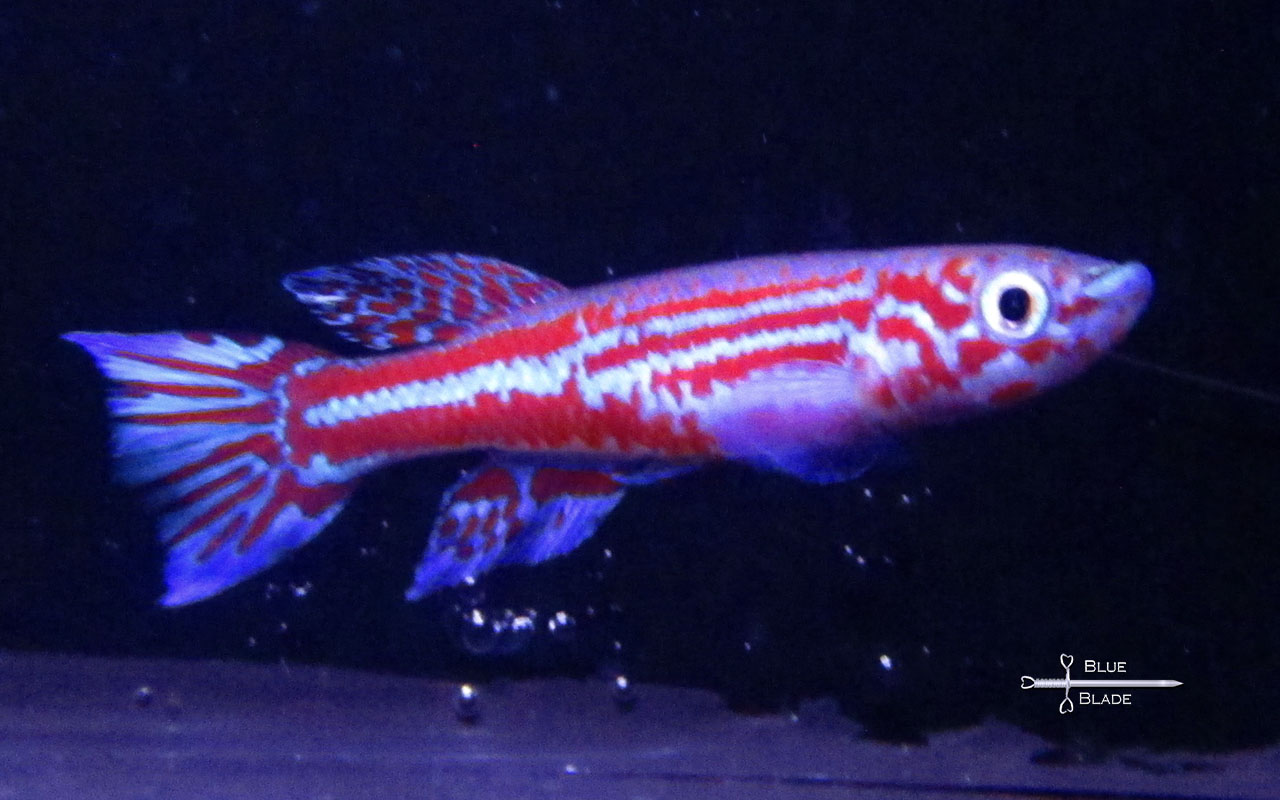




Aphyosemion ogoense of the GHP 80/24 collection are a beautiful killifish with a bright blue base and horizontal red stripes and spots. Eggs are lain in top mops. They are non-annual Killifish that live several years and grow to almost 2.5 inches long. These are a new species at BBF, so breeding notes will be updated as we learn more.




This line of Aphyosemion primigenium are from the the Nyanga river drainages in southwestern Gabon, Africa. The primigenium GBN 88/10 have a blue-green base color to the body and fins with a few bright red stripes. Eggs are lain in top mops. They are non-annual Killifish that live several years and grow to about 2 inches long. They tend to produce well, with high hatch rates and many fry found in the breeding tank.




This line of Apyosemion raddi were collected from a small streams near west-central Cameroon, Africa. Eggs are lain in top mops. They are non-annual Killifish that live several years and grow to almost 2.5 inches long. These are a new species at BBF, so breeding notes will be updated as we learn more.




Also known as Chromaphyosemion splendopleure, Aphyosemion splendopleure of the Tiko location were collected from a small streams near western Cameroon. Like the other "Chromaphyosemion" fish, they have long fins and a rainbow of color and irridescence. The splendopleure Tiko Green have a blue/green irridescence to the body but are mostly red/orange, blending to strong yellow/orange in the fins. Eggs are lain in top mops. They are non-annual Killifish that live several years and grow to about 2 inches long.




Aphyosemion striatum of the Cap de Estrellas collection location in Gabon are a beautiful blue and green killifish covered in small red spots arranged in horizontal stripes. Eggs are lain in top mops. They are non-annual Killifish that live several years and grow to about 2 inches long.




Also known as Chromaphyosemion volcanum, and formerley described as a Aphyosemion bivittatum superspecies, Aphyosemion volcanum of the Chutes d’Ekom HML 99-1 location were collected from a small stream near the Mt cameroon volcano in Cameroon. They are a beutiful fish with the Males displaying long fins and a rainbow of color and irridescence. The Females, while not nearly as colorfull as the males, do have some red tints and black banding which is unique. Eggs are lain in top mops. They are slow to grow and mature, and egg production seems slow untill they reach 9 months to a year old. They are non-annual Killifish that live several years and grow to almost 2.5 inches long. In a community tank, they are peaceful if not shy.





Scriptaphyosemion guignardi of the Mamou location were collected from small streams in the Fouta Djalon region of Guinea, Africa. Eggs are lain in top mops. They are non-annual Killifish that live several years and grow to almost 2.5 inches long. These are a new species at BBF, so breeding notes will be updated as we learn more.




the "Golden Wonder" Killifish is one of the few fish you may find in pet stores. They are a larger killifish, growing to over 3 inches long. They come from shallow and occasionally brackish waters of India and Sri Lanka. The “gold” variant is an aquarium bred fish selected for the fantastic gold color. These fish like to stay near the top of the tank and snatch food from the surface with their large upward facing mouth. They are not picky eaters and will eat most anything they can, including fry and smaller fish. They lay their eggs in floating mops or vegetation. Eggs develop quickly and hatch to produce large fry capable of eating BBS or almost any small foods right away. They can jump, so keep a lid on them.





Epiplatys fasciolatus are larger non-annual killifish that grow to about 3 inches long. They come from a small river near Totota in southern Liberia. Eggs are lain in top mops. They are non-annual Killifish that live several years and grow to almost 2.5 inches long. These are a new species at BBF, so breeding notes will be updated as we learn more.





Epiplatys sexfasciatus are larger non-annual top-water killifish that grow to about 3 inches long. They come from Nort western Gabon, Africa. They are named after the six black vertical bands, and tend to stay near the surface of the water. They are new to BBF but so far they have been producing a fair number of eggs for us.
Annual Killifish:
Annual Killifish have hard lives in the wild - they often inhabit very shallow waters that dry up completely for several months. Their lives are focused on growing up fast, and breeding before the dry season. The eggs then lay at rest in the dry or damp soil until the next rain, when the cycle begins again. In our aquariums they may live a bit longer than a year, and the eggs must be collected and stored for 3 to 6 months before they will hatch.




Eggersi blue or "Blue Orchid Notho" killifish are similar in care and nature to the Rachovii. The 1.5 to 2 inch "blue" eggersi are an aquarium strain that is predominately a pale metallic blue that can easily be seen from across the room. Nothobranchius eggersi are found in East Africa in pools and swamps near the Rufiji River in Tanzania. Incubate eggs for 2-4 months before hatching.




Guntheri Killies are a bit slimmer than the previous two, with slightly smaller pectoral fins. This seems to reduce the puppy look a bit, but they still have the same behaviors. This line was collected from marshes of the Zanzibar archipelago of Unguja Island in eastern Tanzania. Eggs should be incubated for 3-4 months.




An offshoot of the "Zanzibar TAN 14-2" Line. These Beautiful fish are missing the Red pigment, making the predominant color a bright iridescent Blue\White. In every other way, they are identical to N. guentheri Zanzibar TAN 14-2.




Nothobranchius korthausae are a neat little annual from streams and rivers of Mafia island off the coast of Tanzania. Like all Nothos, they breed well in peat or substrate and the eggs must be dried for a few months. These fish often present as either bright red or a bronze/gold color, and our line contains both types. They have been producing quite well for us.
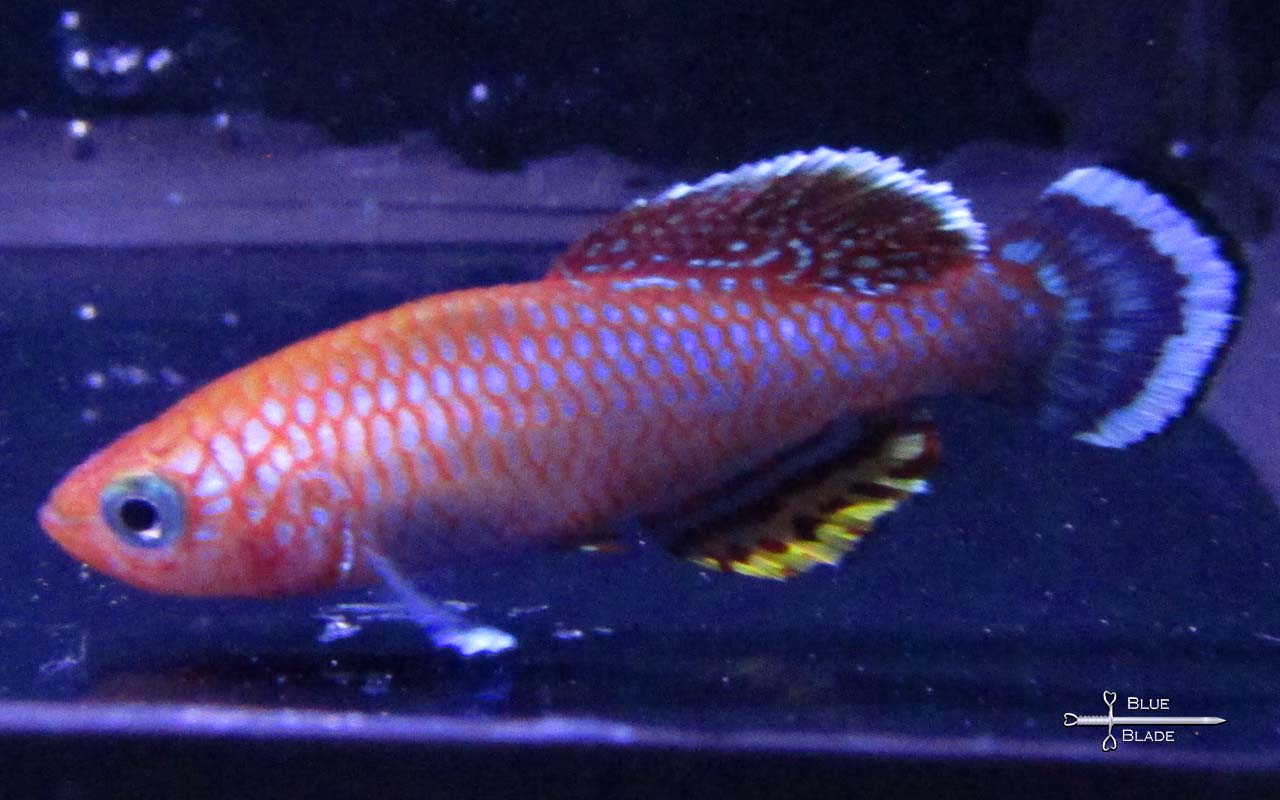




These Nothobranchius polli are a new collection from the Democratic Republic of Congo. The parents were collected from the wild in April 2023, and we are currently breeding the first generation (F1) of captive raised fish from this collection. They appear to be producing eggs, but we are working to increase the hatch rate.




Rachovii Killifish are my favorites. They are annuals that grow to about 2 inches long, have wonderful puppy like mannerisms, and fantastic color. This line was collected from waters around the Pungwe river near Beira, Mozambique in southern Africa. Eggs are lain in peat and should be stored for 5 to 7 months before wetting again. They grow fast, breed easily, and are all round gorgeous and entertaining fish.
To get your own Killifish follow the Links under "Buy Here"
Or to E-mail us to see if any are available at contact@bluebladefish.com